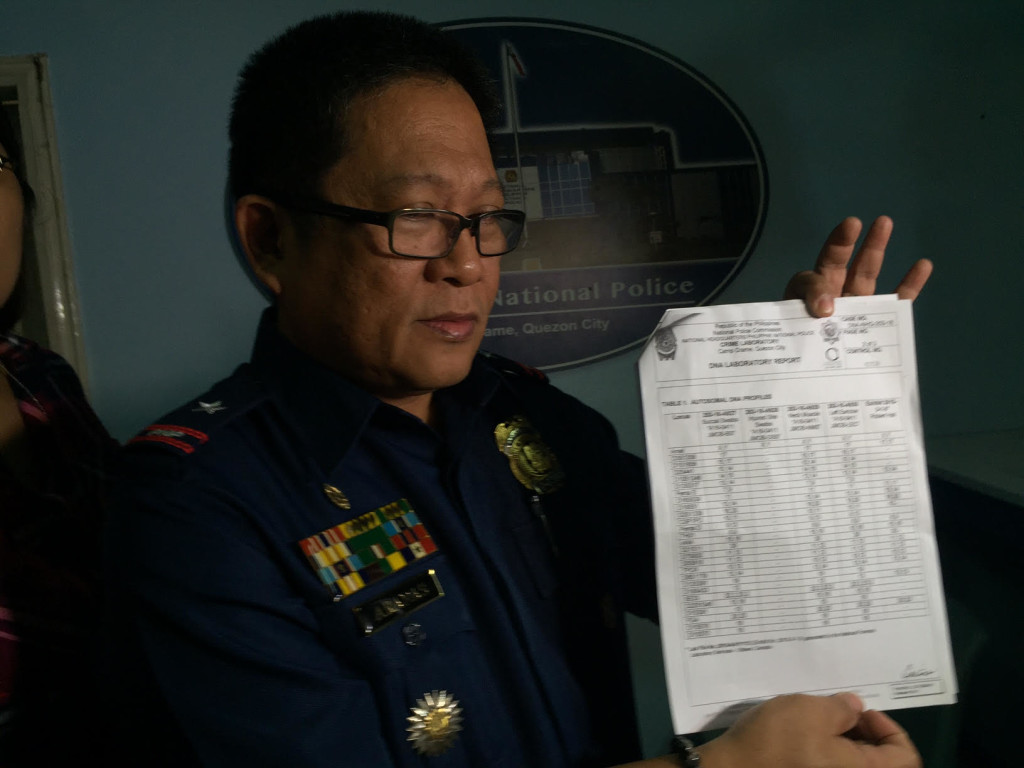PNP confirms head recovered in Sulu is that of Robert Hall

PNP Crime Laboratory director Chief Supt. Emmanuel Aranas shows the result of the DNA test conducted to confirm whether the severed head found in Sulu belonged to Canadian Abu Sayyaf captive Robert Hall. JULLIANE LOVE DE JESUS/INQUIRER.net
The Philippine National Police’s Crime Laboratory on Tuesday confirmed the identification of the decapitated head found in Sulu to be that of Canadian national Robert Hall, a captive whom the Abu Sayyaf group (ASG) bandits beheaded last June 13.
“The DNA profile from the Canadian Embassy matched with the specimen, meaning the head that was recovered from Sulu is indeed that of Mr. Robert Hall,” PNP Crime Laboratory director Chief Supt. Emmanuel Aranas said in a press briefing at Camp Crame.
The ASG bandits beheaded Hall in the jungles of Sulu after a P600-million ransom deadline the group gave the government expired at 3 p.m. last June 13.
READ: Abus mock Duterte, behead Canadian
Authorities are still looking for Hall’s body.
But Aranas said the process would not take long because they took fresh DNA samples from the head.
Some five hours after the rebel group confirmed the beheading of Hall, Jolo police found a decapitated head of a Caucasian man inside a plastic bag around 9 p.m. on Sanchez Street beside the Carmelite Cathedral there.
READ: Severed head transferred to Manila for DNA testing
Hall was the second Canadian the ASG beheaded since it took hostage four people, including a Filipino woman and a Norwegian national on Samal Island September last year. His compatriot John Ridsdel was beheaded in April.
Aranas said the Canadian Embassy provided them Hall’s DNA profile from the National Forensic Laboratory Services in Ottawa, Canada so the PNP could compare it with the specimen taken from the severed head.
The Crime Laboratory took DNA samples from the body part through buccal swab from the oral cavity, samples from the neck muscle and the left earlobe.
With the police positively identifying it as Hall, Aranas said the head will now be under the custody of the Canadian Embassy.
Asked about the importance of conducting the DNA test on Hall, Aranas explained that until the victim is positively identified through the DNA or fingerprint data, the PNP cannot turn over the body to the Canadian Embassy.
“Kailangan ma-satisfy ‘yung sa Crime Lab regarding the identification. Why? Because we will be releasing a death certificate. At sa certificate, kailangan ilagay pangalan ng tao so bago ilagay ang name, we need a positive identification first. Once we release the death certificate, ‘yan na ang signal, i-rerelease na namin sa concerned people,” he said.
(We need to satisfy the requirements of the Crime Lab regarding identification. Why? Because we will be releasing a death certificate, and in that certificate, the name of the person is stated. So before we put the name, we need positive identification first. Once we release the death certificate, then that’s the signal, we can then turn the body over to the concerned people.) IDL/rga/CDG